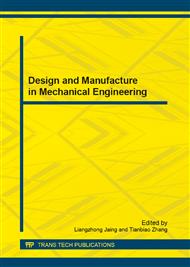p.345
p.351
p.358
p.364
p.368
p.373
p.381
p.386
p.392
Film Cooling Effect on the Nosetip in Hypersonic Flow
Abstract:
The cooling effect of a film cooling thermal protection system is investigated, and the flow field, aerodynamic force and surface temperature distribution are obtained. The numerical method is validated by experiment with no film cooling. The physical mechanism of the reduction of temperature is analyzed. The jet interacts with the free stream to form a thermal insulating layer on the wall, which enables the free stream to flow outside the wall rather than interact with the surface to produce aerodynamic heating. In addition, the film cooling flow form a cool recirculation region, which reduces the temperature on the surface. Analysis of the numerical simulation results shows that this kind of thermal protection system has an excellent cooling effect on the surface of the nose-tip. With the outlet speed increasing, the cooling efficiency is improved and the aerodynamic resistance is changeless. When outlet speed and total pressure are invariable, the cooling effect of air and nitrogen is the same, but the cooling effect of helium is better.
Info:
Periodical:
Pages:
368-372
Citation:
Online since:
September 2013
Authors:
Price:
Сopyright:
© 2013 Trans Tech Publications Ltd. All Rights Reserved
Share:
Citation:


